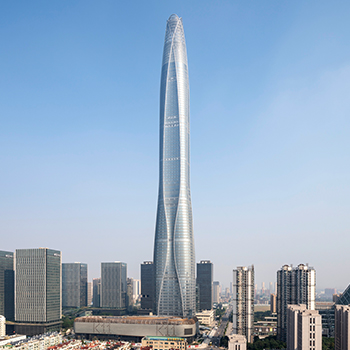Filter by
This project is a renovation and replaced Global House
You must be a CTBUH Member to view this resource.
The Residences of 488 University Avenue
The Icon, Residences of U Avenue, Global House
Building
Completed, 2019
M5G 1V6
residential / office
composite
207.0 m / 679 ft
55
2
453
158
65,022 m² / 699,891 ft²
You must be a CTBUH Member to view this resource.
You must be a CTBUH Member to view this resource.
Proposed
Construction Start
Completed
Usually involved in the front end design, with a "typical" condition being that of a leadership role through either Schematic Design or Design Development, and then a monitoring role through the CD and CA phases.
Material Supplier refers to organizations which supplied significant systems/materials for a building project (e.g. elevator suppliers, facade suppliers, etc).
You must be a CTBUH Member to view this resource.
Usually involved in the front end design, with a "typical" condition being that of a leadership role through either Schematic Design or Design Development, and then a monitoring role through the CD and CA phases.
The Design Engineer is usually involved in the front end design, typically taking the leadership role in the Schematic Design and Design Development, and then a monitoring role through the CD and CA phases.
The main contractor is the supervisory contractor of all construction work on a project, management of sub-contractors and vendors, etc. May be referred to as "Construction Manager," however, for consistency CTBUH uses the term "Main Contractor" exclusively.
Other Consultant refers to other organizations which provided significant consultation services for a building project (e.g. wind consultants, environmental consultants, fire and life safety consultants, etc).
Material Supplier refers to organizations which supplied significant systems/materials for a building project (e.g. elevator suppliers, facade suppliers, etc).
CTBUH Releases Year in Review: Tall Trends of 2019
12 December 2019 - CTBUH Research
CTBUH Canada: Vertical Building Additions Breakfast Event
25 September 2019 - Event

12 December 2019
Year in Review: Tall Trends of 2019
CTBUH Research
The year 2019 was remarkable for the tall building industry, with 26 supertall buildings (300 meters or taller) completed, the most in any year. This...
12 December 2019
The year 2019 was remarkable for the tall building industry, with 26 supertall buildings (300 meters or taller) completed, the most in any year. This is the second consecutive year in which this record was broken, besting 18 supertalls in 2018.
25 September 2019
CTBUH held a breakfast seminar on vertical building additions, featuring presentations from prominent local firms profiling vertical building addition technologies.
Subscribe below to receive periodic updates from CTBUH on the latest Tall Building and Urban news and CTBUH initiatives, including our monthly newsletter. Fields with a red asterisk (*) next to them are required.
View our privacy policy